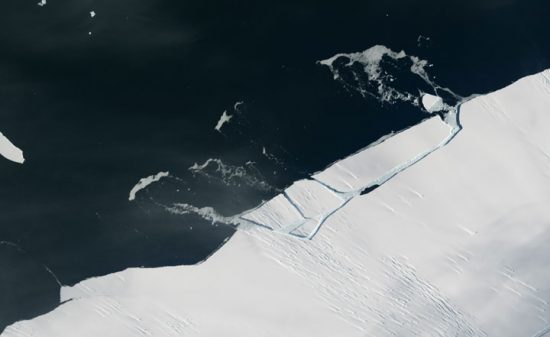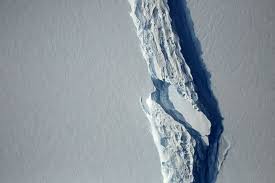February 16, 2017 – Reports of Arctic sea ice coverage this year indicated the second lowest level since we began keeping records (1979). Lower sea ice in the Arctic has been trending for a number of years. But the opposite has been observed in the Antarctic where the Southern Ocean has witnessed net sea ice growth. That is until now.
The latest satellite data from the United States shows a contraction in Antarctic sea ice as of February 13. Total extent amounts to 2.287 million square kilometers (883,015 square miles). That’s fractionally lower than the previous record set in 1997.
February is usually the low point for Antarctic sea ice each year. That’s because it is the peak of summer in the Southern Hemisphere.
A record low is bucking a trend of sea ice growth, often used by climate change skeptics, to prove that global warming is a hoax. States Mark Serreze, Director of the U.S. National Snow and Ice Data Center, “We’ve always thought the Antarctic as the sleeping elephant starting to stir. Well, maybe it’s starting to stir now.”
In recent weeks we have learned about a growing crack in the Larsen C ice shelf. Larsen C isn’t the only Antarctic ice shelf cracking. In West Antarctica, the Pine Island Glacier has calved an iceberg that will be about 880 square kilometers (340 square miles). Satellite imagery shows the break.
Breaks like Pine Island are happening because the Southern Ocean off Antarctica has warmed almost 0.55 Celsius (1 Fahrenheit) degrees. And like the Larsen C crack, (seen below), breaks of this type erode the buffers that maintain the integrity of the land ice in Antarctica.
The Larsen C crack, (seen below), will lead to a much bigger iceberg, almost 5,000 square kilometers (2,000 square miles).
Breaks of this type erode the buffers that maintain the integrity of land ice in Antarctica. No one as of yet can anticipate what further erosion of ice shelves will do to continental ice masses.
2016 was the third year in a row with observed record high average temperatures. In the extremes of the Arctic and Antarctic, the rise in temperature has been greater than anywhere else on the planet.
Which brings us to these questions. Are we decades away from a major shedding of continental ice produced by rising sea and land temperatures? Or do we still have the time to stabilize the temperatures to prevent such a tipping point?


















